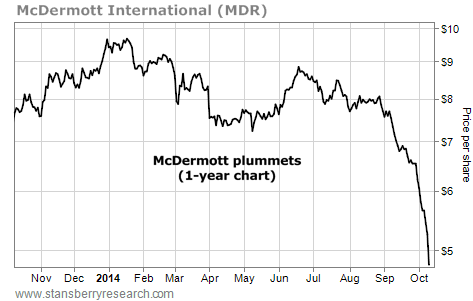| Home | About Us | Resources | Archive | Free Reports | Market Window |
Sand: A Major Key to America's Energy FutureBy
Friday, October 10, 2014
Sand is one of the most ordinary substances in the world...
But it's one of the key factors in the biggest energy revolution of our generation.
What can sand do to deliver more profits? I will explain that to you today...
To set the stage, take a look at the costs today of getting a barrel of oil out of the ground in different ways:
Right now, we know nearly everything about producing oil from those first three segments. But we know comparatively little about producing shale or "tight" oil. That's where we could see the biggest decreases in cost as we learn and adapt. While as low as $10 a barrel for "conventional" oil sounds cheap, there isn't much conventional oil left... especially here in the U.S. Meanwhile, there's plenty of shale oil...
Right now, we're only recovering about 5% of the shale oil in place. We're leaving 95% of it in the ground. The thing is, with a few small changes, oil companies can drastically increase the amount of shale oil they're getting out of each well.
And one of the main ways to do that is with sand...
Sand is a crucial component of the hydraulic fracturing ("fracking") process. For five years, sand has been used to prop open the cracks in the shale so the oil can be extracted.
However, engineers recently discovered that the sand (called "proppant") hasn't gone deep enough. Only about 40% of it is actually producing oil. Engineers found that if companies use more sand (up to five times as much), the wells produce far more oil than before.
Companies continue to make other changes that improve the economics of shale... like drilling multiple wells from a single pad and drilling longer horizontal wells.
Oil and gas producer Sanchez Energy was able to cut its costs by more than 50% over the past year. Other companies surveyed by industry analyst Hart Energy reported that applying more sand, with some other tweaks, resulted in a 40% increase in profit from each well. This significantly reduces the breakeven price of shale.
There is enormous potential still on the horizon. The bulk of the oil production increases to date have come from two main shales: the Eagle Ford and the Bakken. The third major shale is the Permian Basin, but it is still in development.
There are many other shales that are increasing production... like the Tuscaloosa Marine Shale in Louisiana, the Utica Shale in Ohio, and the Niobrara in Colorado. These new shales will continue to push U.S. oil production higher.
In short, sand represents our shale-oil learning curve. And as we learn more, production is sure to rise much higher in the coming years.
This massive trend is just getting started... and it has a long way to go. Don't miss out.
Good investing,
Further Reading:
The American energy boom is enjoying a lot of publicity right now. But Matt says there's a "super shale" area you're not hearing about in the mainstream press... "If this play's potential is realized, the region – and the public companies operating in it – could enjoy a major boom..." Get the full story here.
"After years of producing oil on their own," Matt writes, "Iran and Mexico now want Western drilling expertise." And Matt says that's good for the oil-services sector. Get all the details here.
Market NotesTHE ENERGY PROJECT BUILDERS GO BUST Many readers know the price of crude oil is falling... but not many know some oil-related businesses are plummeting.
There is a group of businesses we call "infrastructure builders." These companies build oil pipelines, refineries, power plants, oil drilling platforms, and dozens of other big projects. When the sectors they operate in do well, these builders boom. When the sectors they operate in do poorly, these builders bust.
Right now, builders are busting. For proof, we point to McDermott International (MDR). It's one of the world's leading builders of big oil and gas projects. Early this year, the stock sat at $9. The recent weakness in oil has hammered shares. They're down nearly 50%. McDermott isn't alone... many infrastructure builders have suffered similar losses.
The key to making money in "boom and bust" sectors is to buy after busts... when nobody wants the assets. Before buying, you'd like to see a bottoming process in the share price... companies selling for well below the value of their assets... and insider buying of discounted shares. We're not seeing those in this sector, but we will eventually. For now, the rout in builders is simply worth watching with interest.
 |
Recent Articles
|



